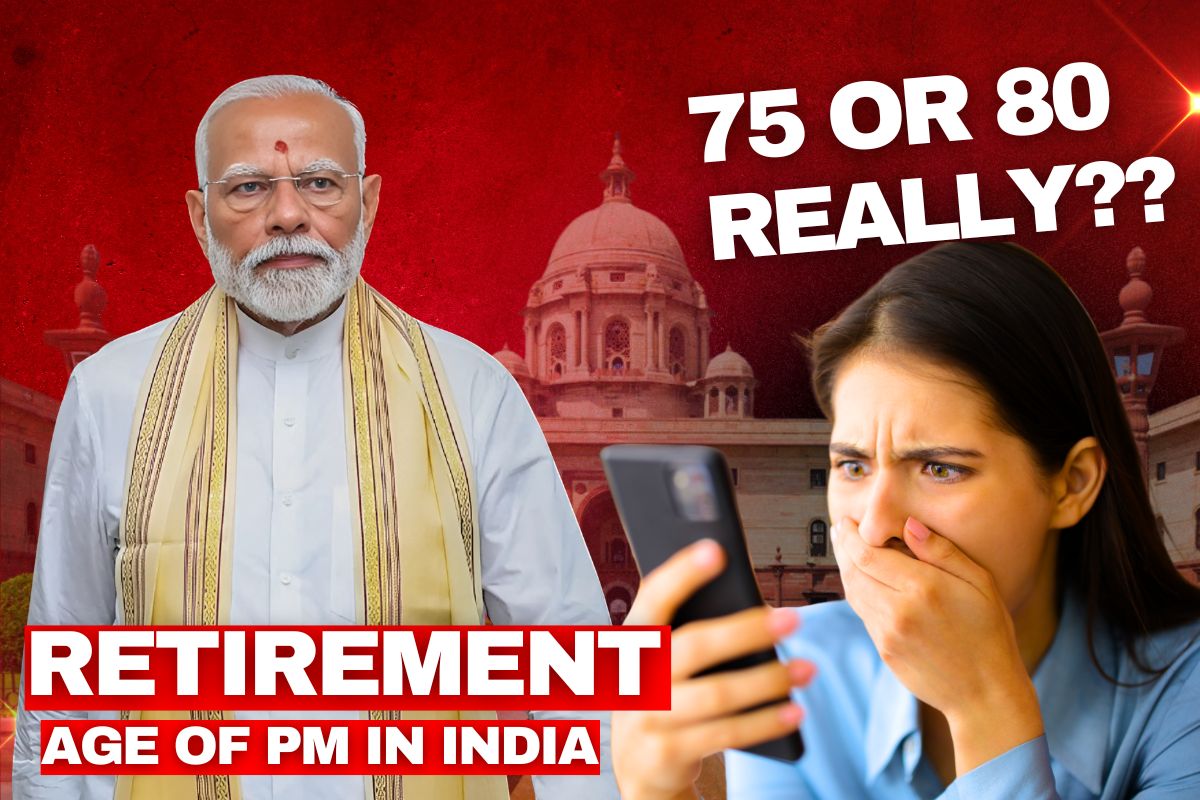


Politics is one area where many topics are highly debated, and the retirement age of politicians is one of them. While many sectors in India impose an age limit on employees, there is no official retirement age of PM in India or any other elected official.
This is especially true considering the recent political debates regarding the retirement age of Indian politicians, the prolonged terms of some politicians and the increasing calls for reform. To grasp the larger discourse of age, politics and leadership in India, it is essential to grasp the regulations about the retirement age of PM in India.
Table of Contents
TogglePrime Minister’s office does not have a specified age for retirement in the Constitution of India. Indeed, other professions in India—including the government sector—have set retirement ages (58 to 65 years for civil servants, for example), but the role of Prime Minister is not bound to such limits.
The members of the Lok Sabha (the lower house of the Parliament) elect the Prime Minister from among themselves, and there are no restrictions on age for eligibility to become the Prime Minister.
Anyone, regardless of age, can be Prime Minister as long as two conditions are fulfilled:
(a) the person is elected as MP to the Lok Sabha
(b) he/she has the confidence of the majority of the members of Lok Sabha.
This means that even septuagenarians, octogenarians and nonagenarians can serve as long as they maintain the political backing to do so.
With its historical emphasis on seniority and experience, India’s political system has seen countless leaders serve well past the traditional retirement age. The informal custom of keeping a lifetime seat for elected officials means that people can stay in politics for an extended time.
The life of the Prime Minister, for instance, can be both a blessing and a curse. While it is a boon for nations to have seasoned leaders at the helm, treating the ageing and the health of senior leaders has time and again become important.
In India, it is not unusual to see veteran leaders (such as Prime Minister Narendra Modi — in 2023 now in his 70s — and former Prime Minister Atal Bihari Vajpayee, who continued in office well into his 70s) serve for long periods in office. These long tenures show India’s democratic system, which leaves it up to the electorate to choose their leaders irrespective of age limits and of the country’s political culture, within which experience is greatly prized.
The concept of a retirement age for politicians in India has lately gained momentum in the Indian media, political leaders and civil society groups. The question has come back into the spotlight, thanks to several reports of senior politicians continuing to hold their posts at a time when they would be vacating them in professional sectors.
The most prominent of these conversations involved the health of senior politicians, including Prime Minister Modi. Critics have raised doubts as to whether politicians in their 70s and 80s can do justice to a fast-changing country like India, while some have said the government must lead with a young and vibrant team. Supporters, meanwhile, have cited the experience and wisdom conferred by age, saying that the prime minister’s job requires vast knowledge — in governance and in navigating complicated international relations.
And for context, this was a widely talked about topic during the 2019 Indian General Elections. PM Modi, in his late 60s then, was hitting the campaign trail hard, defying senior politician stereotypes.
Opposition leaders from parties including the Indian National Congress (INC) also left their doubts on the succession of political leadership with aging politicians across the political spectrum.
Though it has been widely lectured as outdated, with calls for retirement age becoming ever louder, experts say the absence of a set limit has resulted in pernicious power imbalances, with older leaders lingering in offices far longer than their counterparts in other professions.
This has raised worries about the concentration of power, succession planning and the prospect of stale ideas and perspectives at the top. Others have noted that younger leaders need room for greater responsibility, which many times is blocked by a generation of older political leaders.
India does not yet have a formal retirement for the Prime Minister, but some reforms have been proposed to solve this issue. The idea of imposing an upper age limit on politicians has been floated, but little notation of it has taken place.
Having said that, one of the most noteworthy developments witnessed in this aspect was the introduction of the ‘Election Commission Bill’, which was aimed towards capping the age of elected representatives (including PM) to hold office.
In the case of this proposal, its detractors took issue and especially members who claim that instituting such an age cap would infringe upon the very nature of democracy. Opponents of older-age restrictions argue that it could mean a loss of veteran experience and political savvy, both of which are critical when navigating complex national and international issues.
Simultaneously, some political analysts have pointed out that reforms like instating a retirement age of sorts could lead to more developmental leaders of a broader range — particularly younger politicians brimming with energy, ideas and aspiration to move the nation into the new age.
The current situation allows senior leaders to retain their positions even beyond the age of retirement. With reforms on the retirement age of PM in India, the political dynamics could be dramatically reversed, bringing in younger leaders who could bring in fresh perspectives on governance.
With a more diverse electorate and a younger generation with high aspirations, the call for reform sends a message that the manpower is to be harnessed and optimized. As this demographic is expected to influence political discussions in years to come, the cry for a more equitable leading group can be heard louder than ever.
The question of the retirement age of PM in India is yet to be solved. There isn’t an official Retirement age of PM in India, but the discussion continues to be relevant wherever there is debate over the length of leadership, position, power and the necessity of fresh perspectives. Amidst the ever-changing political landscape in India, the prospect of reevaluating an official retirement age for elected positions comes into play, and the conversations could and should materialize into reforms that balance the needs of the increasingly younger and dynamic electorate.
Thinning out: The political scene continues to unfold, and these discussions of age, experience and the changing requirements of the country will likely continue to shape the future of India’s leadership.

